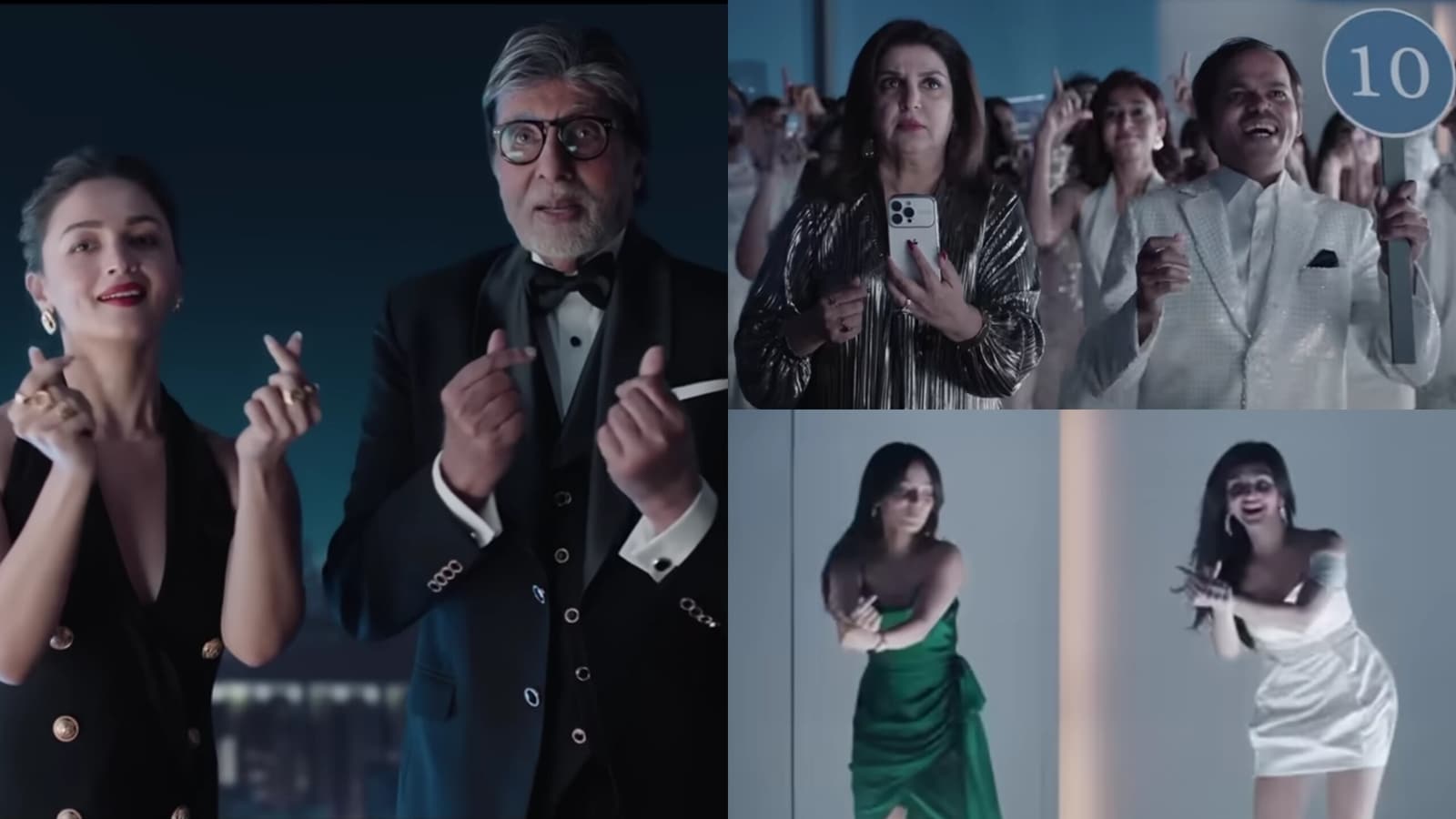Goodbye cardigans, hello rhinestones! With last week’s announcement of her upcoming album “The Life of a Showgirl,” Taylor Swift has officially entered a bold new era – one where she is trading her minimalist girl-next-door persona for unapologetic maximalism that is steeped in sequins, feathers and rich cultural history. Ms. Swift unveiled multiple versions of the album cover, which feature the pop diva in embellished, rhinestone-ed ensembles complete with sleek fishnets, abundant jewels and headdresses crowning a black bob – reminiscent of the classic showgirl aesthetic of the 1920s designed to overwhelm the senses with spectacle, excess and show-stopping glamour.

Central to the jaw-dropping visuals is Taylor Swift’s reimagination of the image of the retro Vegas-inspired showgirl – an ornament of the stage rooted in glittery spectacle and bittersweet sacrifice. A symbol of excess and hedonism, the showgirl is not just a performer – she is spectacle personified, dramatized with jewels and high-heels, while concealing a history of ambition, exploitation, and survival. From Broadway’s Ziegfeld Follies to extravagant theatrical productions that were a hallmark of the Las Vegas entertainment scene, Swift’s glittery new chapter embodies a portrait of vivid cultural significance, inviting a closer look into the origins of the showgirl – perhaps ushering her sharpest critique of fame yet.
Burlesque origins
The showgirl has been an object of cultural fixation for a long time, with its origins in burlesque dancing and vaudeville stages of the late 19th and early 20th centuries, when entertainment transitioned from opera and traditional theatre to more exaggerated productions that dazzled the senses. The female body was showcased with provocative visuals, making it a symbol of sensualized glamour and fantasy. Early influences on the figure of the showgirl include Parisian cabarets like the Moulin Rouge and the Folies Bergère, as well as the Ziegfeld Follies, a series of elaborate stage productions that ran on Broadway in the first half of the 20th century. These productions, with their lavish costumes and large casts of beautiful women, set the stage for the iconic Las Vegas showgirl. In the 1950s, Las Vegas began to emerge as one of the leading entertainment capitals of the US, and showgirls became a crucial part of the entertainment scene.
The latest album cover variant unveiled by Swift, complete with rhinestone arm-cuffs and chokers and gigantic yellow ostrich feather headdresses, takes direct inspiration from Jubilee! – the longest running Las Vegas production show that spanned for a record-breaking 35 years, from July 1981 to its closing in February 2016. The show’s elaborate couture costumes were inspired by the Ziegfeld Follies, as stated by Bob Mackie, who designed the archival piece worn by Taylor on the “It’s Beautiful” version of the album cover.
However, the reality of showgirls is not just beauty and glamour – embodying both liberation and limitation, the showgirl represented women in public performance spaces but underneath the opulence lies exploitation, strict beauty standards, and limited agency.
Also Read | Taylor Swift’s fans are excited about all the sourdough Easter eggs
The showgirl in pop culture
The showgirl persona soon transitioned from the Ziegfeld stages to the silver screen, going beyond dancing and chorus-lines to shaping narratives. Hollywood has often exoticized the showgirl figure, portraying her as a symbol of dazzling power and surface-level beauty, but with a tinge of pity highlighting her vulnerability and disposability – Pamela Anderson’s 2024 film The Last Showgirl showcases the story of a Las Vegas performer fired from a shuttering stage production; the 2010 film Burlesque featuring Cher and Christina Aguillera portrays the dying art form of burlesque dancing; Nicole Kidman’s tragic portrayal of Satine in Baz Luhrmann’s Moulin Rouge; Marylin Monroe’s iconic performance of “Diamonds Are a Girl’s Best Friend” in Gentlemen Prefer Blondes (1953) where the showgirl became immortalized.
Taylor Swift is not the first musician to embrace the showgirl persona. Beyonce, Cher, and Lady Gaga have all done it before. Kylie Minogue’s 2005 “The Showgirl Tour” paid homage to the symbol, and even acts like Abba have been known to perform in feathered headdresses and bodysuits, embracing the aesthetic. More recently, Taylor Swift herself paid tribute to the showgirl in her 2022 “Bejeweled” music video featuring a modern burlesque dancer – Dita Von Teese’s cameo feature making more sense now?
An article on Vogue cleverly pointed out that one of the tracks on Swift’s upcoming album is called “The Fate of Ophelia” – an allusion to Hamlet’s wife who went insane and drowned herself, as well as a painting by John Everett Millais depicting the same character – which echoes the main album cover art of “The Life of a Showgirl” featuring Swift in a bejeweled costume half-submerged in water.
The showy excess of the feathered performer often carries the baggage of being ostracized from polite society, a victim of objectification dubbed as the fallen women. However, the icons that have portrayed the showgirl have done so with power, brilliance, and resilience, inverting the narrative of heartbreak and pity into agency, authority, and sovereignty – rewriting femininity as performance on their own terms and reclaiming the stage.
The showgirl has always been a symbol of glamour, spectacle, and performance, but also a vessel of projection, desire, and resilience. With this new era, Taylor Swift is stepping into the lineage of a dazzling legacy carried forward by the likes of Cher, Marilyn Monroe, and the great Las Vegas revues, where feathers, sequins and sensuality meet the cultural memory of women commanding the stage.












